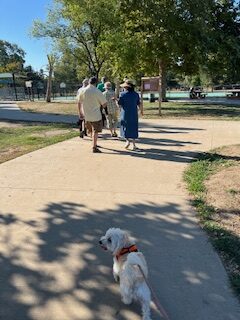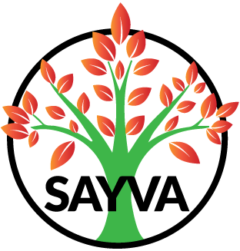Our Story—Our Why
“Sayva means wisdom, sagacity, depth. According to the Talmud, it is a quality that comes in our later years. Unlike American culture, Jewish tradition never saw old age as a time of diminishment, disability and loss. The old were never retired, removed or isolated. The Jewish tradition recognized that elders possess a capacity to see life from higher perspectives. The tradition honored and celebrated the unique contributions of elders to our collective life. This is an ideal we can embrace as the foundation of a new initiative in our community.
The goal of Sayva is to make Later Adulthood joyful, interesting and purposeful – a time of life to be celebrated and anticipated, not dreaded or denied. More than accumulating programs, we aim to create a new culture for this time of life, in the same way that American culture once developed a pattern and a plan for adolescence. This new culture of Later Adulthood would be characterized by its own developmental tasks, and offer its own special opportunities, experiences and values. Our objective is to launch a network that will generate this new culture, embracing people in their Later Adulthood, and offer them a way of life to be celebrated.”
Excerpt Rabbi Ed Feinstein, SAYVA Founder
This initiative is made possible by the generous support of the Jewish Community Foundation (JCF) of Los Angeles, with Valley Beth Shalom serving as the fiscal partner.
Click here to learn more about the JCF grant in their press release
In 1900, the average American life expectancy was 47. In the 1930’s, it extended to 65, so Social Security and Medicare were set to that age. By the end of WW2, the life span grew to 72. Today, if you reach 65, you can expect to live well into your 80’s or 90’s. Every year, Hallmark sells 85,000 “Happy 100th Birthday” cards. With these extra years, the American idea of “retirement” is obsolete. Many of us will live 30 years, a full third of our lives, after age 65!


There’s a challenge: While we live much longer, our culture has no script, no map, no concept for all these years. We knew how to be teenagers. We understood the expectations of adulthood. We even knew what reaching middle age meant. What does this time of life hold for us? We don’t even have a name for this time of life. It is sometimes called “Later Adulthood”; “Third Chapter”; “Adulthood II”; “Encore Years” – that period of life between the end of work and end of life. For many, it is a time of (relative) physical and mental capacity, of independence, mobility, financial security, and sociability. But there is no social map to help us find our way through this time of life.
